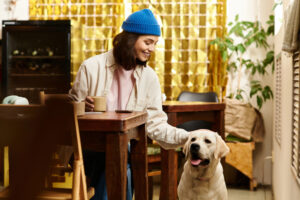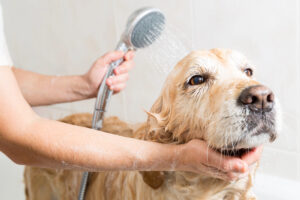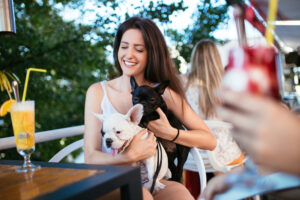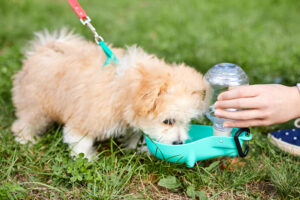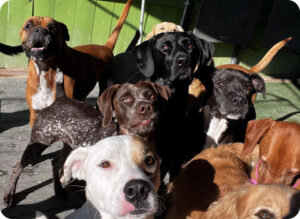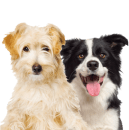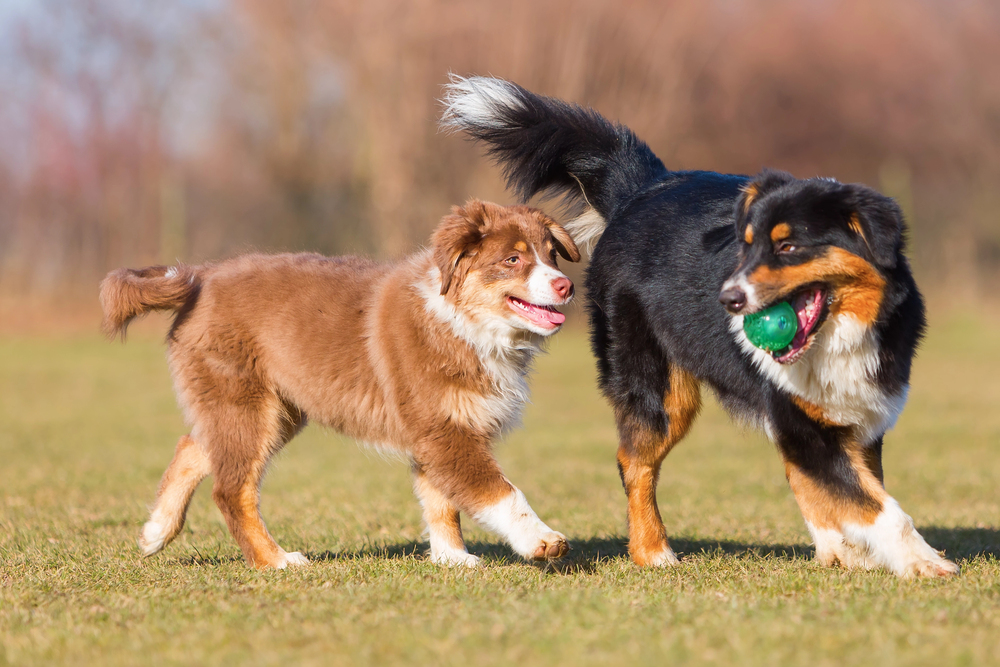
How Much Exercise Does a Dog Need Daily
If you want your dog to live a long, healthy, and happy life, you must make sure they get plenty of exercise. To prevent behavioral issues, improve cardiovascular health, and maintain a healthy weight, exercise is essential. Factors such as breed, age, health, and temperament all play a role in determining the answer. Read on for some guidance on how much exercise your K9 companion really needs.

Boarding Clients!*Discount does not apply during holiday/peak rate periods.

Factors Influencing Exercise Needs
There are many factors that influence the amount of exercise a dog needs daily including breed, age, overall health, and individual temperament. Let’s take a closer look at the benefits.
Breed
Dogs of different breeds need different amounts of exercise and have different levels of energy. To illustrate:
- High-Energy Breeds: Some dog breeds, such as Labrador Retrievers, Border Collies, and Australian Shepherds are notoriously hyperactive and require a lot of physical activity. Agility training, running, and hiking are some of these dogs’ favorite strenuous activities. In most cases, they need to get some exercise every day for at least an hour.
- Moderate-Energy Breeds: Included in this group are breeds such as Cocker Spaniels, Beagles, and Bulldogs. While they do not necessitate the strenuous activity of high-energy breeds, they do enjoy moderate playtime and frequent walks. On a daily basis, these canines usually benefit from thirty mins to one hour of exercise.
- Low-Energy Breeds: Dogs of the Basset Hound, Shih Tzu, and Chihuahua varieties tend to be less active and energetic. Twenty to thirty minutes of exercise per day, spread out between short walks and light play sessions, is typically more than enough.

Age
When it comes to exercise, a dog’s age is a major factor:
Puppies
- Compared to adult dogs, puppies typically have more energy and need to exercise more frequently but for shorter periods. You may have observed that your puppy experiences the “zoomies” multiple times daily. Preferring to collapse into a puppy pile on your lap, the zoomies entail franticly racing around the house, occasionally at night.
- Instead of taking your puppy for one long walk—which can be taxing on its developing body—it is safer to break up the day into multiple shorter walks or play sessions because puppies are constantly growing. In the end, you’ll learn more about your puppy’s specific needs in terms of activity and mental stimulation as you spend more time with them; after all, every puppy is unique!
- Remember that exercise is an excellent method to socialize and train your new puppy; consult your veterinarian or breeder regarding the amount of daily activity that is suitable for your puppy.
Adult Dogs
- The amount of exercise your dog needs is greatly affected by their breed. More exercise is necessary for high-energy breeds compared to low-energy ones.
- Remember to prioritize your dog’s health as well. See your vet about an exercise program that will help your adult dog maintain a healthy weight without causing any pain if they have a medical condition like hip dysplasia, heart problems, or respiratory issues.
Senior Dogs
- You may need to limit your senior dog’s running to shorter distances as they lose some of their former speed. Exercise is vital for all dogs, but especially for older dogs.
- When it comes to exercising your older dog, it’s best to consult your vet and keep an eye on their behavior. You, as the owner, are in the greatest position to determine the amount of exercise your dog is capable of safely enduring. All dogs benefit from exercise because it keeps them active and stimulates their minds, which in turn helps them live longer and avoid obesity.
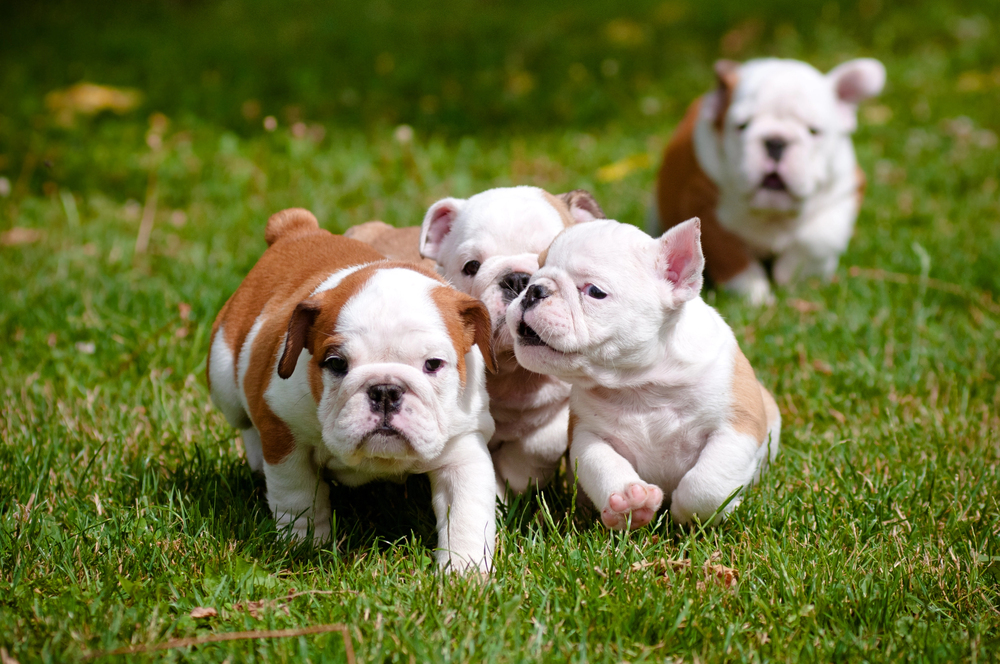
Health
A dog’s activity level should be determined by their current health condition. Certain dogs may need to modify their exercise routines due to health conditions like arthritis, heart disease, or respiratory issues. To find out how much and what kind of exercise is best for dogs with health issues, it’s important to consult your local vet.
Individual Temperament
The amount of exercise a dog needs depends on several factors, one of which is their temperament. While some canines thrive on constant stimulation, others may be more content to spend their days lounging around. You can adjust your dog’s exercise program to suit its individual needs by keeping an eye on its behavior and energy levels.
Types of Exercise for Dogs
We all get bored doing the same thing all the time. Varying your dogs exercise will keep you both engaged and can ensure that you both get healthful exercise.
Different dogs have different needs, but many different kinds of exercises can help. To keep your dog active and engaged on multiple levels, try a combination of the following:
Walking: One of the easiest and most widely used ways to exercise dogs is to take them for walks. In addition to being a great way to get some exercise and mental stimulation, it also allows you to socialize. Your dog’s age, breed, and health will determine the optimal amount of time and level of exertion for walks.
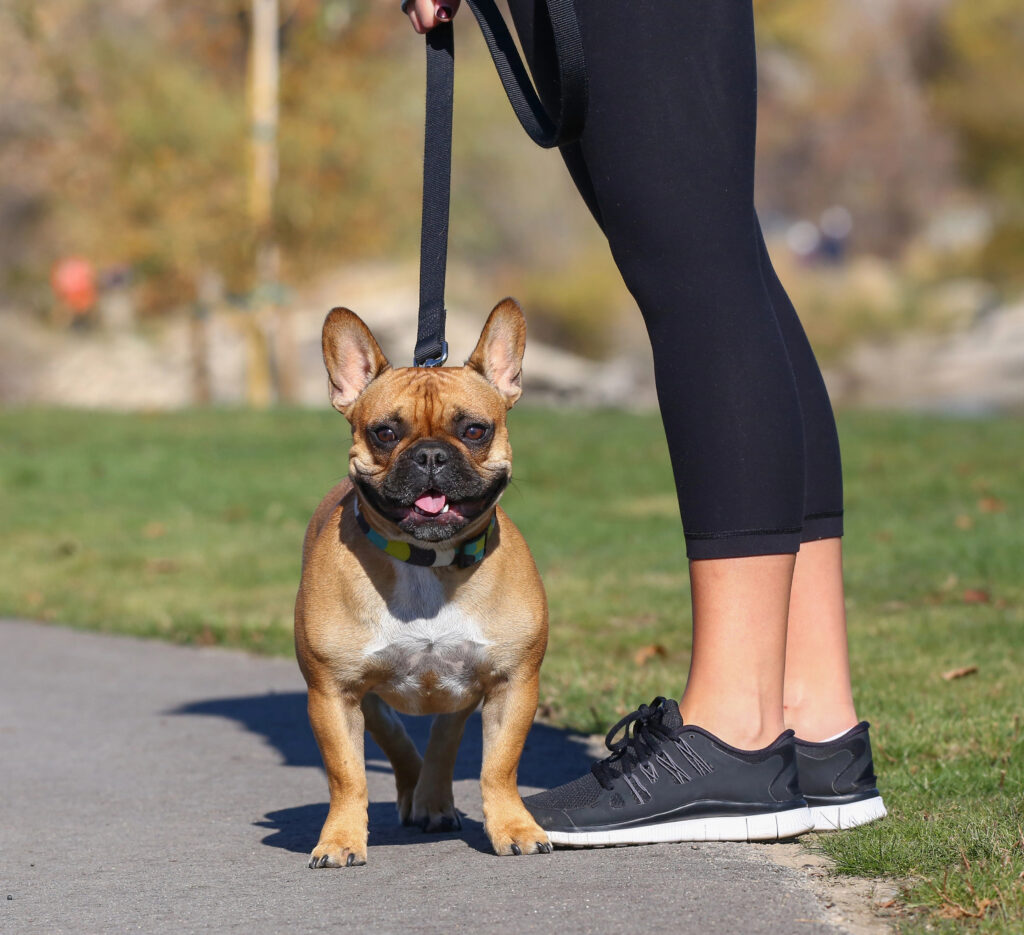
Running: Running is a great way for energetic dogs to get some energy out. Running, whether as a jog with you or a sprint across an open field or beach, is a great way to get your dog moving and happy.
Hiking: When dogs go hiking, they get to exercise their sense of adventure and discover new places. It’s an excellent method of getting them moving while simultaneously challenging their brains. Pick routes that are manageable for your dog’s current fitness level and remember to pack food and water at all times.

Playtime: Spending time playing with your dog has many benefits. You and your dog can get a great workout and grow closer when you play games like frisbee, tug-of-war, and fetch.
Swimming: For dogs suffering from joint problems or arthritis, swimming is an excellent low-impact activity option. It works every muscle in your body without causing any harm to your joints. In the summer, swimming is a terrific way to keep dogs active and cool since many of them enjoy it.
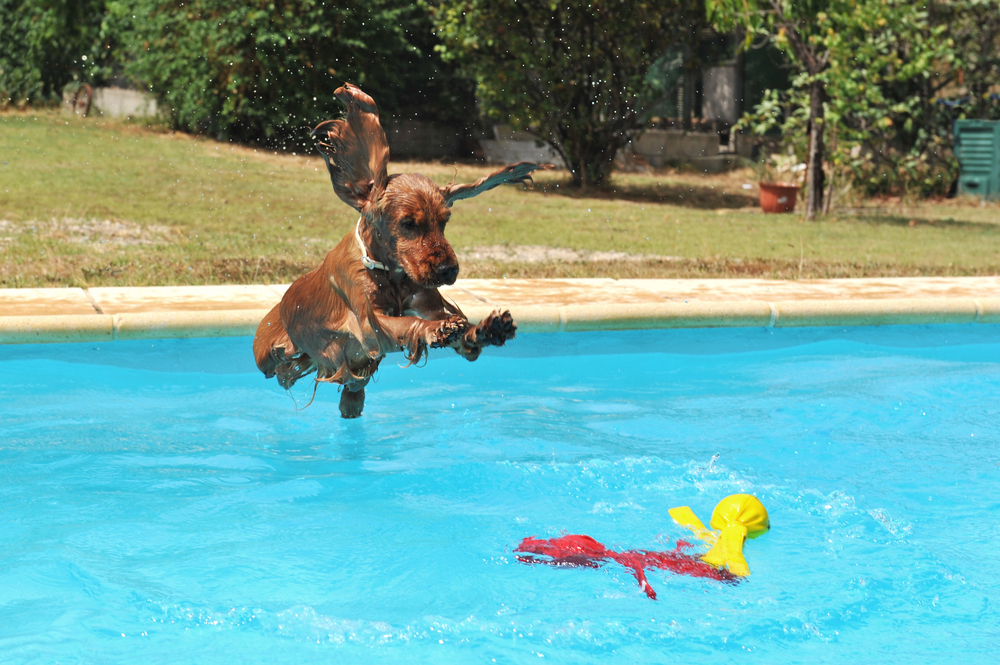
Agility Training: Dogs can benefit physically and mentally from agility training, which entails navigating obstacle courses. As a bonus, it gives high-energy breeds a fun challenge while also improving their coordination and self-confidence.
Mental Stimulation: It is essential to include mental exercises like training and puzzle toys for dogs, particularly intelligent ones. Staying mentally engaged can be a great defense against boredom and its negative effects on behavior.
Doggy Daycare: Daycare socialization provides numerous physical and mental benefits for dogs. From regular exercise to improved behavior, daycare socialization can have a significant impact on your dog’s overall well-being. If you’re looking for ways to improve your dog’s quality of life, daycare socialization is an excellent option to consider.
Indoor Exercise for Dogs
When the weather outside is terrible or there isn’t enough room for your dog to run around outside, an excellent alternative is to exercise them indoors. If you want to satisfy your dog’s mental and physical demands with indoor exercise, consider these suggestions:
Indoor Fetch:
Playing fetch isn’t limited to outdoor spaces. A ball or a pliable toy can allow you to play a variant of fetch in the comfort of your own home. Before you begin, make sure there is no furniture or other objects lying around that could cause harm. Your dog can get some exercise and have fun playing this game at the same time.
Tug-of-War:
When you’re looking for an indoor game that can challenge your mind and body, tug-of-war is a great choice. Get your dog involved in a fun game of tug-of-war with a strong rope toy. In addition to strengthening your muscles, this activity will bring you closer to your dog. Make sure to play by the rules to prevent injuries, like giving your dog a win every so often and pausing if the game gets too rough.
Hide and Seek:
Playing hide-and-seek with your dog is a great way to get him moving and stimulate his brain. Get started by sending your dog to one room and ducking into another. Get your dog to come looking for you once you’ve hidden. In addition to being a great form of exercise, this game will help your dog improve his memory and cognitive abilities.
Stair Climbing:
Stair climbing is a great way to exercise your dog if your house has stairs. To entertain your dog, try tossing a toy up the stairs and seeing if they can fetch it. Alternatively, you can use treats to guide them up and down the stairs. Strength training and burning calories go hand in hand with this exercise. Overexertion can cause serious health problems for dogs, especially those of breeds prone to joint problems, so it’s crucial to keep an eye on your pet.
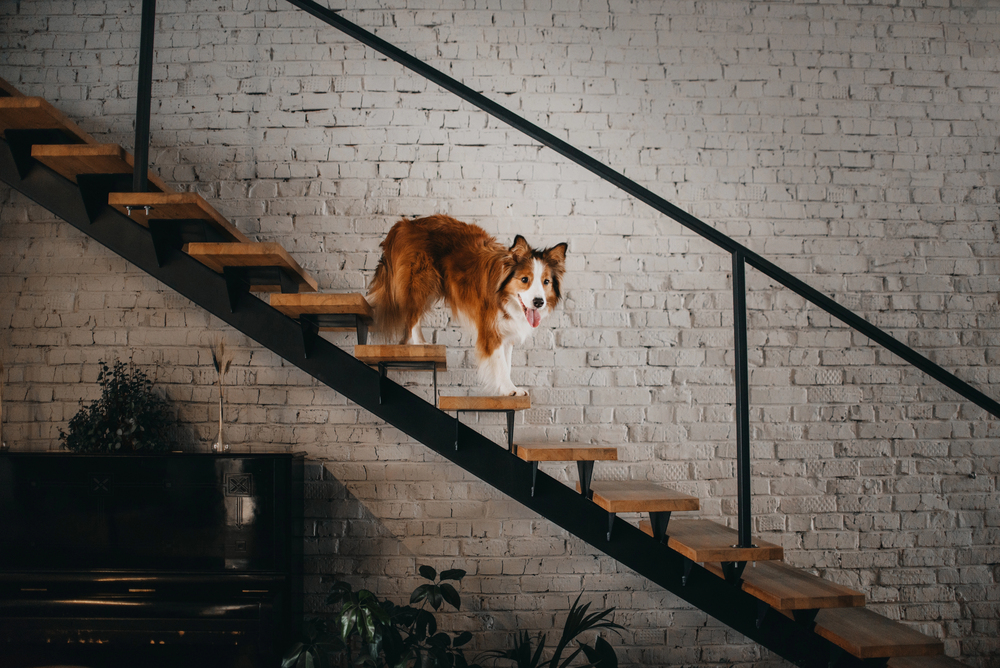
Puzzle Toys:
Your dog’s brain will be stimulated and entertained for hours on end with a puzzle toy. There are a variety of shapes and sizes of these toys, including interactive games where your dog must solve puzzles for a reward or treat-dispensing balls. Aside from being a great mental exercise, puzzle toys are a great way to kill boredom.
Training Sessions:
Training sessions are a fantastic opportunity for both mental and physical stimulation, in addition to being a wonderful means of reinforcing desirable behavior. Raise your dog’s level of obedience by teaching him new tricks or commands. You and your dog can benefit from frequent, brief training sessions that are both mentally stimulating and bond-building.
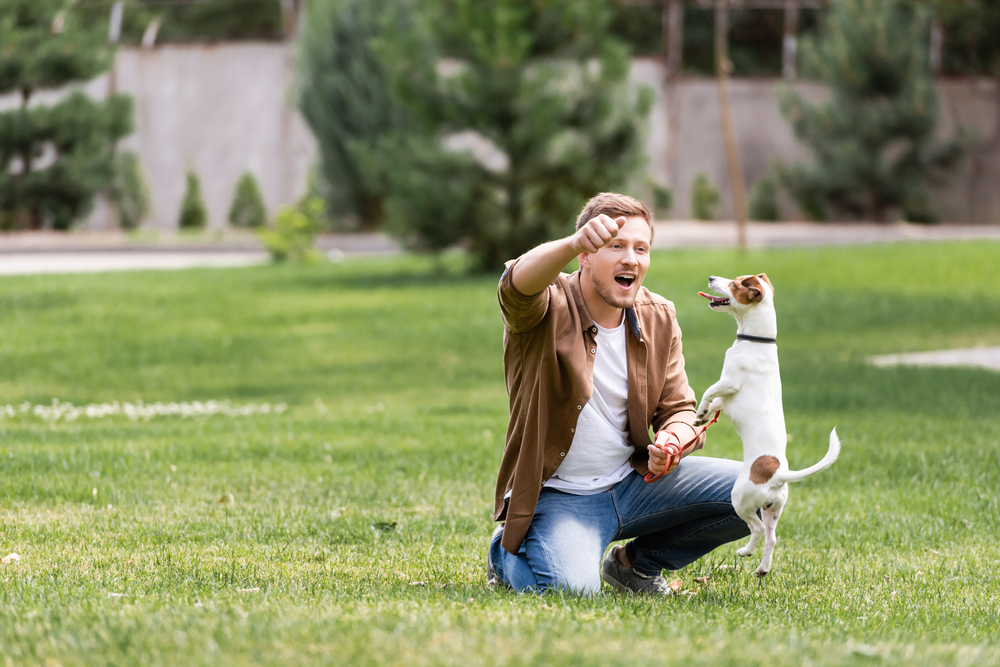
When you can’t take your dog for an outdoor walk, there are plenty of indoor activities to keep him or her moving and thinking. Incorporating a combination of these activities will keep your dog active, engaged, and content. Always keep an eye on your dog to make sure they’re safe while playing, and modify the activities based on their age, breed, and health. To give your pet the best possible workout, it’s a good idea to combine a mixture of both indoor and outdoor activities.
Creating a Balanced Exercise Routine
Your dog’s physical and mental well-being should be considered when designing an exercise program. To design a successful workout regimen, consider the following:
Your dog’s physical and mental well-being should be considered when designing an exercise program. To design a successful workout regimen, consider the following:
Set a Schedule
When training your dog, consistency is key. Make exercise, playing, and other activities a regular part of your day. This will keep your dog active and engaged mentally while also giving them a sense of what’s to come.
Vary the Activities
To keep your dog from getting bored with their routine and instead look forward to it, try a variety of exercises. For a varied workout, switch up your routine by walking, jogging, playing fetch, and other activities.
Monitor Your Dog’s Response
Keep an eye on your dog to see how their exercise program is affecting them. If they are showing symptoms of overexertion like heavy panting, limping, or unwillingness to move, you might want to consider reducing the intensity or duration of their activities. On the flip side, your canine may benefit from additional mental or physical stimulation if it shows signs of restlessness or destructive behavior.
Adjust for Weather Conditions
Your dog’s exercise program may need to be adjusted depending on the weather. If you’re going to be outside for any length of time during the heat of the day, it’s best to take it easy in the early morning or late at night. Drink plenty of water and think about bringing your dog inside for some exercise or mental stimulation with puzzle toys. Make sure your dog is warm enough, especially if they have short hair, and shorten their walks when it’s cold outside.
Consider Professional Help
Talk to your vet or a dog trainer if you need advice on your dog’s exercise program or if your pet has any health concerns. A personalized fitness plan that is both safe and effective can be created with their assistance.
Overall
Your dog can be kept healthy, happy, and well-behaved by creating a routine that considers their breed, age, health, and temperament. You and your canine friend can both benefit from increased physical and mental stimulation on a regular basis, which will enhance your dog’s quality of life.
A well-rounded exercise program tailored to your dog’s specific needs will promote their happiness and health. Whether it’s a brisk run, a relaxed stroll, or a mentally challenging game, your dog can remain fit, engaged, and happy with the correct exercise routine.



